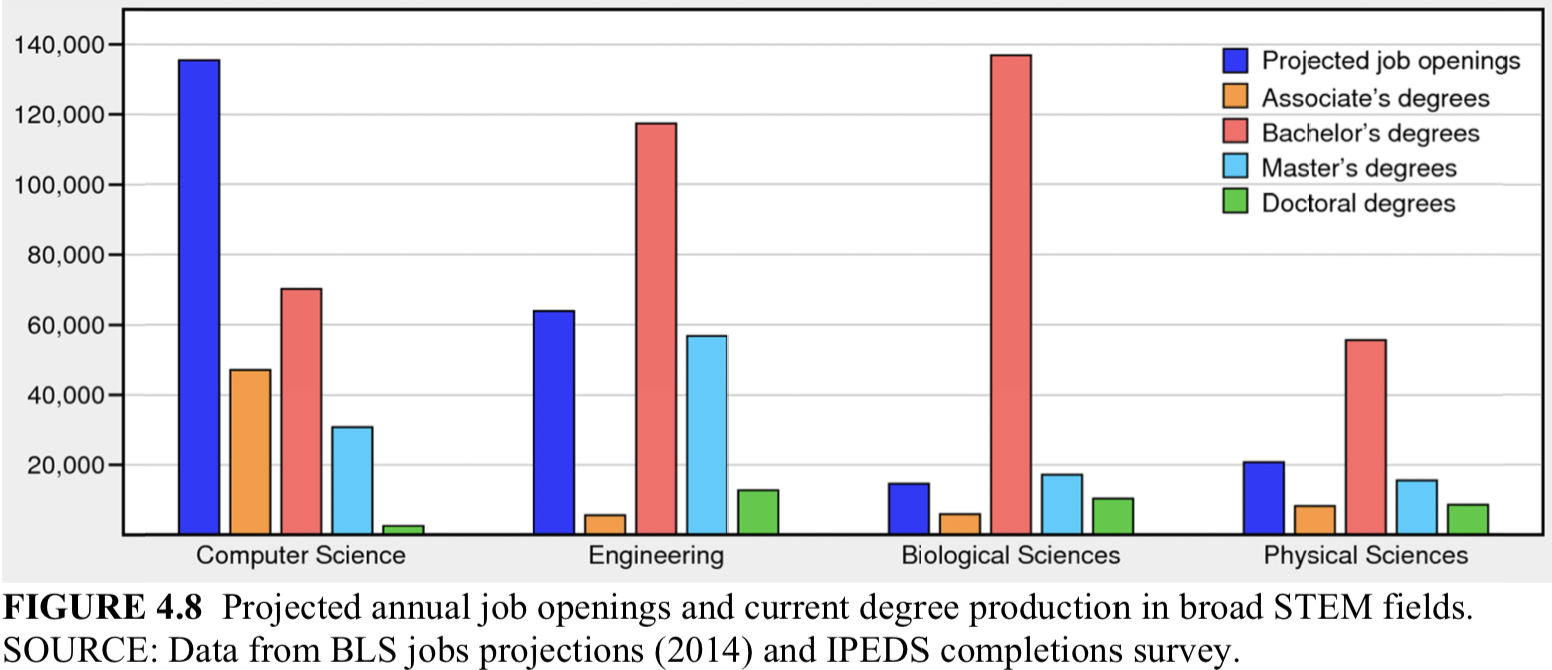From Falling Behind article in Inside Higher Ed.


The growing number of jobs in the computing field far outpaces how many students are earning bachelor’s degrees in computer science and similar fields, according to a lengthy new report from the National Academies of Science, Engineering and Medicine. The continued demand for computer science programs at colleges and universities has strained faculty workloads, especially as more and more students enroll. Of those students, few are women or from underrepresented minority groups, and that’s not likely to change unless academe begins targeting those populations.

These are the takeaways from the report -- and the national academies have suggestions, though they stressed some solutions will vary by institution. “Strains on educational institutions are significant,” the report reads. “There is a growing sense of an impending crisis in many universities.” The academies’ recommendations are as follows:We are part of the trend. Undergraduate enrollment in this department is now at 921, up from around 300 5-or-so years ago. You can also read Where the STEM Jobs Are (and Where They Aren’t), in the NY Times, which presents similar data.
- Colleges and universities should consider funneling more resources into their computer science departments to address professors' increasing workload. Administrators should be working with their departments to develop new goals on faculty and staff retention and seriously mull increasing those numbers and the academic rank of those professors.
- It’s temping for institutions to enforce caps on computer course or major enrollment -- but that decision should be weighed carefully.
- Computer science courses should be taught creatively with a heavy focus on technology for “high-quality instruction.”
- Institutions should try to increase interest in computer science programs among their students -- both those people who intend to major in it and not, and be deliberate in recruiting and keeping more women and black, Hispanic, Latino, American Indian and Alaska Native students.
- Partnerships should be developed among colleges and universities and industry professionals. This could also encourage certain companies to provide research funding.
- Because computer scientists are so in demand, and public institutions train them, states should be providing more money to help boost the work force in this area.
- Education on the importance of computer science should begin in kindergarten through secondary school.
- Trends in undergraduate enrollment should be tracked better, and government at all levels should be working better with colleges to understand these data and how they can be used to influence decisions on academic programs.
